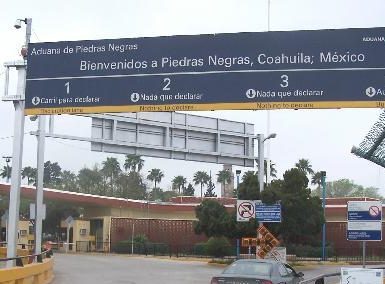Last month, the U.S. Commerce Department, headed up by Secretary Wilbur Ross, came to an agreement with Mexican counterparts, inking a new tomato import deal that would supplant the recently departed Tomato Suspension Agreement.
News bits around anti-dumping laws and tariffs on Mexican imports and 100 percent inspection rates of produce coming up from Mexico have been circulating for months now, but with a new tomato deal, there’s a light at the end of the tunnel when it comes to building a better bridge between the two North American trade partners.
But while everyone from tomato importers here in Arizona to tomato growers in Florida are breathing a sigh of relief over the new deal, some farmers are hoping for the same legislative progress for other crops including cucumbers, peppers, blueberries, and melons.
The American Farm Bureau’s president Zippy Duvall said in a statement that “other crops haven’t received such relief, so other farmers struggle to keep up with surging imports from Mexico,” such as the items listed above.
“The United States trade representative has a duty to defend all agricultural markets, so it’s our sincere hope his office will move quickly to forge similar agreements over other products that are too often sold at artificially low prices,” he continued.
Under the new tomato agreement, floor prices would be raised and inspection would be increased to 100 percent. That latter has drawn ire from those in the industry as well as lawmakers, such as Sen. Martha McSally (R-AZ), who praised the commerce department for coming to terms on a new deal, but made it known that a 100 percent inspection process would create a backlog of commodities at the border, which would lead to a major financial and physical loss.
But getting new deals done, much like the new tomato deal, wouldn’t be simple or as effective as the new tomato agreement.
“It’s not just as simple as it sounds. You can’t just call up the Commerce Department and say you want new terms and conditions on bell peppers or cucumbers,” said Scott Vandervoet, Chairman of the Fresh Produce Association of the Americas.
Getting new deals done on peppers, cucumbers, melons, and others would require new dumping investigations into other Mexican exports, which would take up a significant amount of time and resources. And when it comes to Arizona’s ports of entry, time is the biggest commodity.
“To get a dumping investigation started you have to look at the entire produce industry, not just one state or region making the claim to the Commerce Department. Then there’s an investigative process, which may never end, like tomatoes,” said Vandervoet.
For months, inspections have been backlogged and time to get trucks through the border has expanded with more produce coming in and fewer customs and border personnel available. Adding new produce deals to the docket sounds like it would make sense to farmers and importers, but for an industry that’s already fearing major volume and value loss, taking those chances isn’t worth it. Upping the inspection rate would only gum up the works even more.
“What a waste of time, energy and money it would be to ship produce 10 hours on a truck, then have it get rejected. It’s a huge inefficiency. They all have their own quality control staff in Mexico at the exporters. It would be a logistical headache for all of us. The price would move on to the consumer down through the supply chain,” said Vandervoet.
The value of Mexican fruit and vegetable imports to the United States has more than quadrupled since the early 2000s, according to U.S. Census trade data. Roughly $3 billion worth of produce crossed through just the Nogales port of entry in 2018.
















Add comment